Research
Research Highlights
Our research focus is on carbon nanotubes and graphene, which we integrate into device structures to explore their potential for high-speed electronics, optoelectronics, and sensing, and to perform fundamental science experiments. Here are some of the highlights of our research. You can find a lot more on our publications page.

Electroluminescence from Single-Walled Carbon Nanotubes with Quantum Defects
Electroluminescence spectroscopy from single-tube devices based on (7,5) carbon nanotubes, functionalized with dichlorobenzene molecules have been demonstrated.
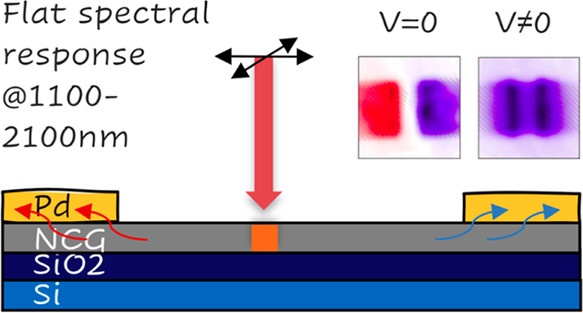
Tailoring Spectrally Flat Infrared Photodetection with Thickness-Controlled Nanocrystalline Graphite
Photodetectors from nanocrystalline graphite (NCG) that are spectrally flat in the near-infrared to short-wavelength infrared region by tailoring the layer thicknesses were fabricated.
ACS Appl. Mater. Interfaces (2022) DOI:10.1021/acsami.1c24306
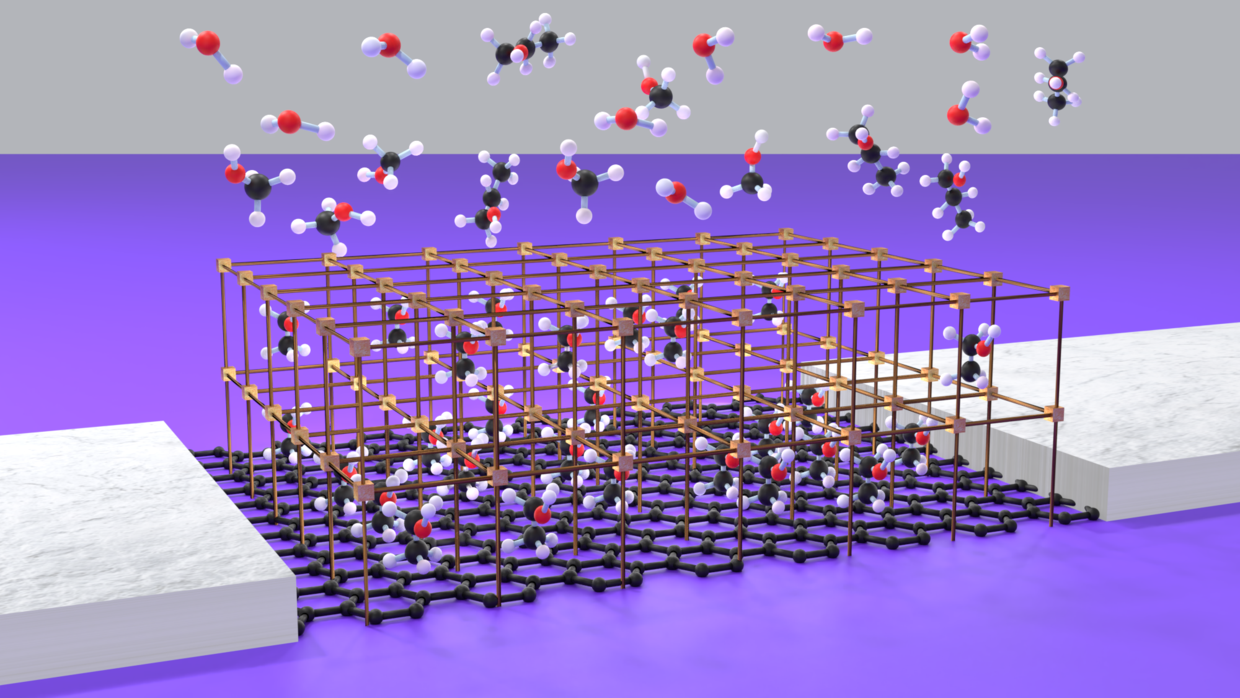
Sensing Molecules with Metal–Organic Framework Functionalized Graphene Transistors
A novel concept of sensing molecules is introduced, which combines the sensitivity of a graphene field-effect transistor with the selectivity of a metal–organic framework.
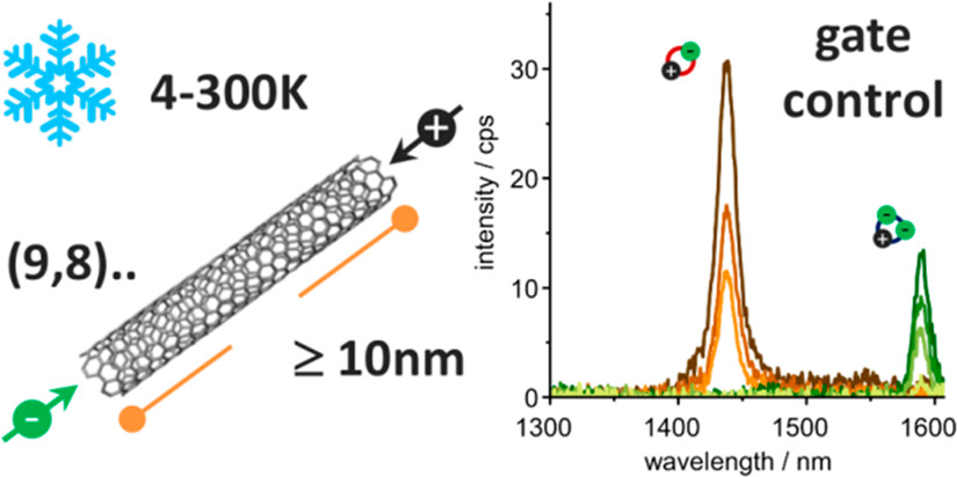
Low-Temperature Electroluminescence of Excitons and Trions in Monochiral Carbon Nanotube Devices
Low-temperature Electroluminescence spectroscopy of ultra-short-channel devices made from (9,8) carbon nanotubes emitting in the telecom band were repoted with line widths down to 2 meV at 4 K.
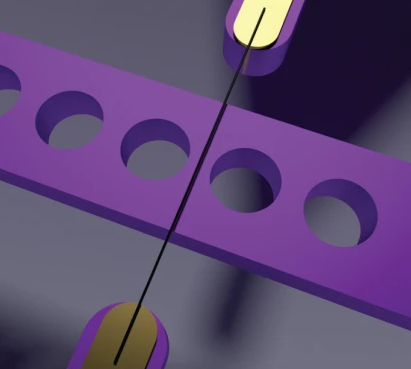
Towards on-chip communication with carbon nanotubes
Electrically driven nanotubes can be forced to emit light with a specific color by integration into photonic crystal waveguide.
Nature Photonics (2016) DOI:10.1038/nphoton.2016.70
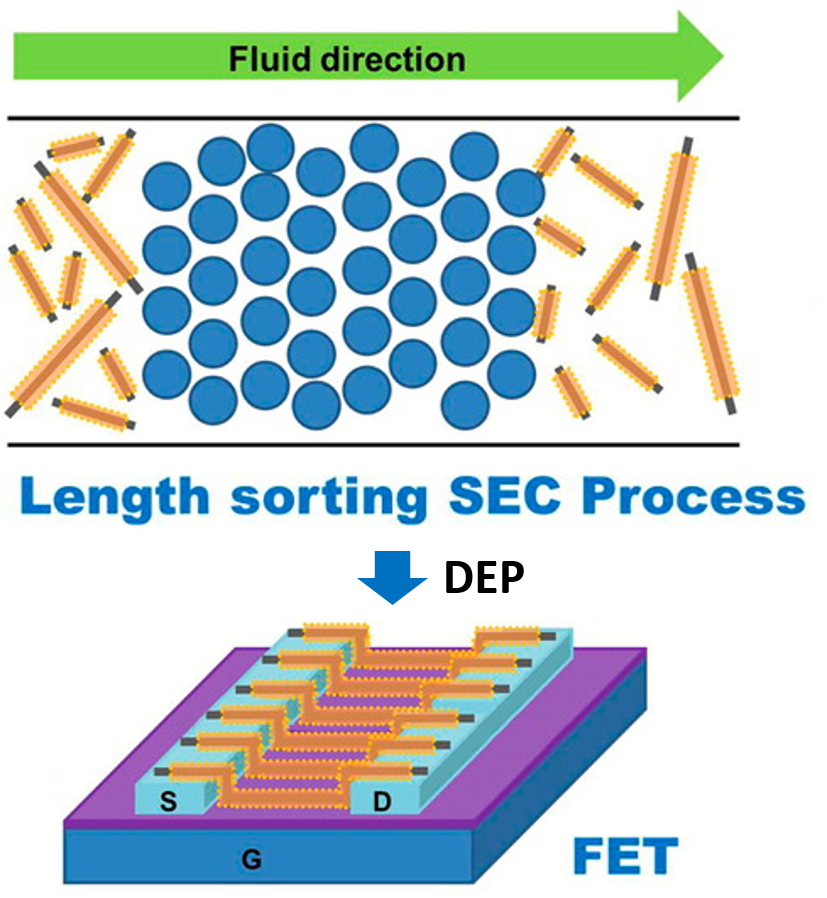
Carbon nanotubes for high-density short-channel transistors
Best performing short-channel transistors have been built by using highly enriched semiconducting single-wall CNs prepared by combining polymer-wrapping with size-exclusion chromatography.
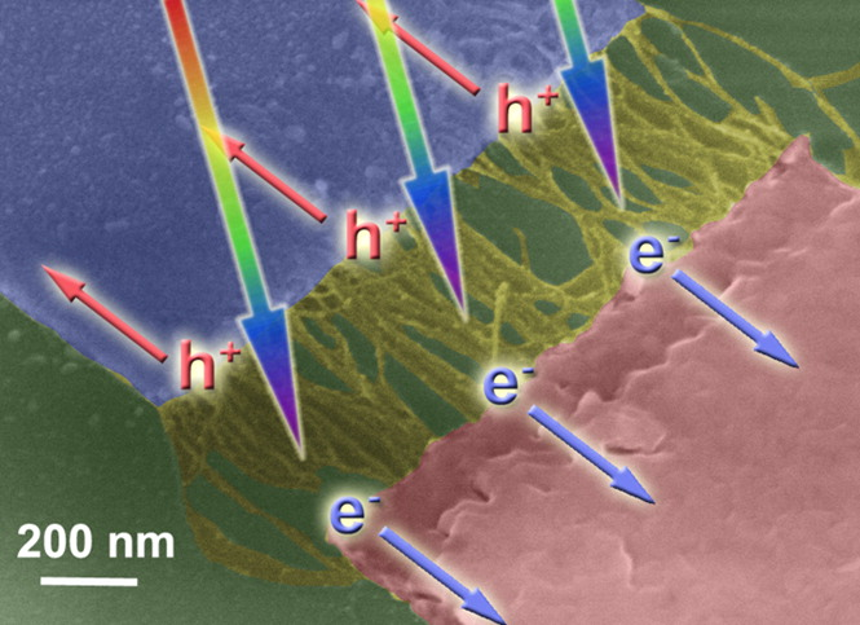
Photocurrent Spectroscopy of Solution Processed SWCNTs
We demonstrate the use of variable-wavelength photocurrent microscopy and photocurrent spectroscopy to study the photoresponse of (n, m) sorted SWNT devices.

Waveguide-coupled light sources
Light from an electrically driven carbon nanotube has been coupled directly into a photonic waveguide structure.
Advanced Materials 26 (2014) 3465
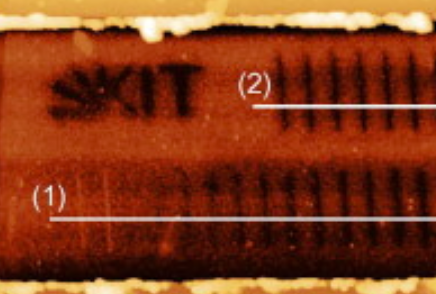
Maskless lithography of graphene
Electron-beam-induced oxidation is used to write arbitrary patterns into graphene.
Carbon 64 (2013) 84-91
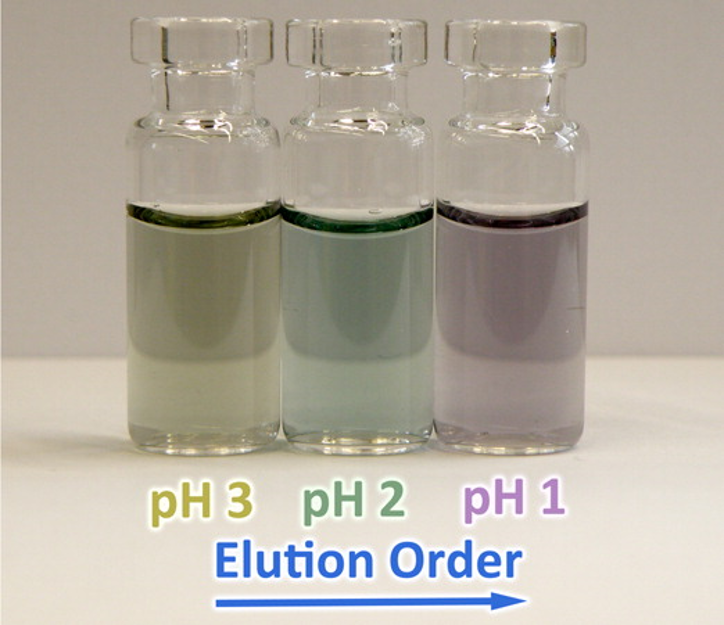
Alcohol helps to sort CNTs
Near monochiral s-SWCNT fractions are prepared with a simple, high-throughput procedure based on the introduction of 1-dodecanol to a chromatography column.
ACS Nano 7 (2013) 3557-3564
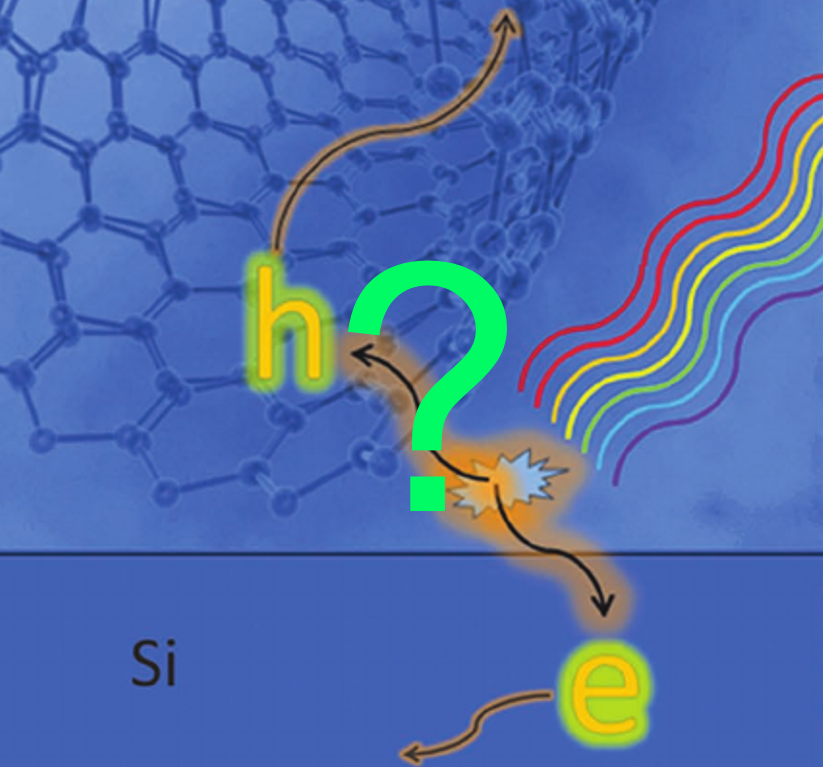
The role of Nanotubes in CNT-Si Solar Cells
We discuss the role of CNTs in typical CNT-Si solar cell designs.
Advanced Energy Materials (2013)
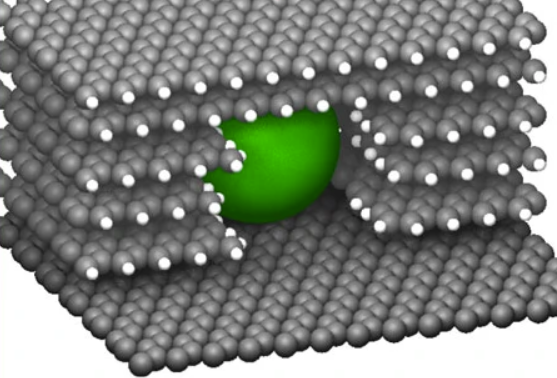
Nanoparticles digging the world's smallest tunnels
Nickel nanoparticles are used to etch world's smallest tunnels into graphite.
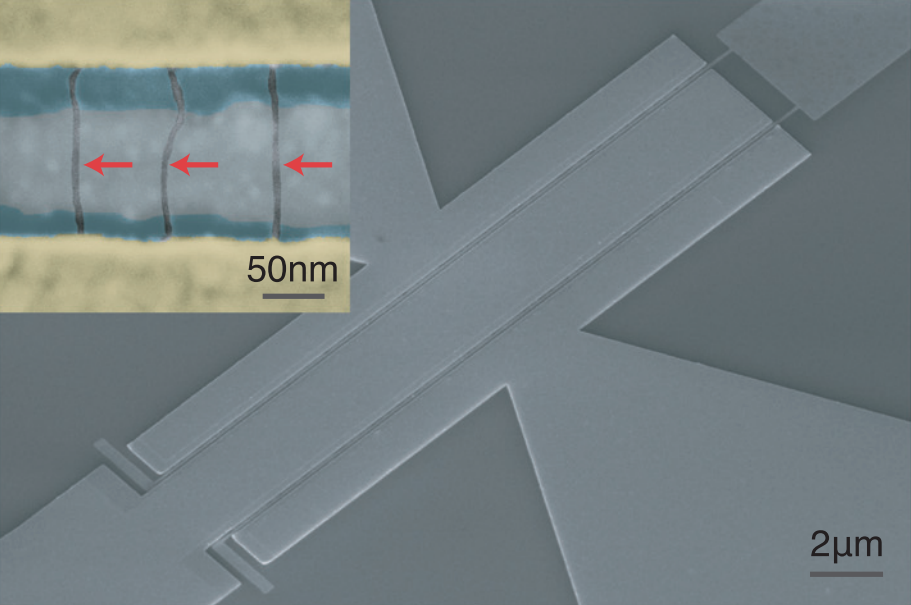
153 GHz CNT FET
We demonstrate a record-breaking 153 GHz carbon nanotube transistor.
Appl. Phys. Lett. 101 (2012) 053123
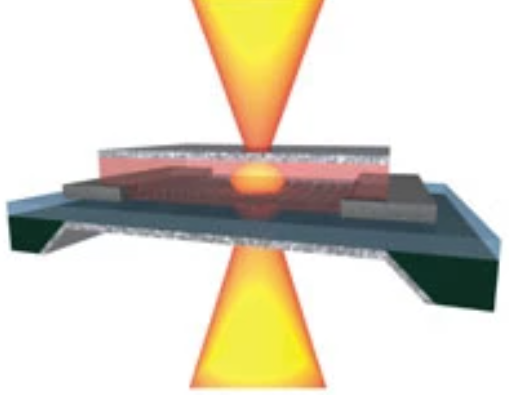
Graphene in a cavity
A sheet of graphene inside an optical cavity shows spectrally confined thermal emission.
[KIT press] [Physik in unserer Zeit]
Nature Communications 3 (2012) 906
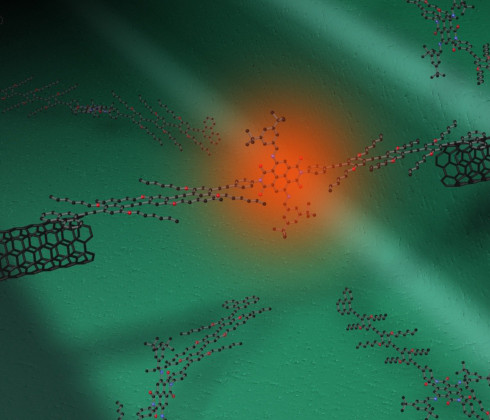
Molecular flashlight
We observe electroluminescence from a single nanotube-molecule-nanotube junction.
[F.A.Z.] [Nanowerk] [KIT Video]
Nature Nanotechnology 5 (2010) 863
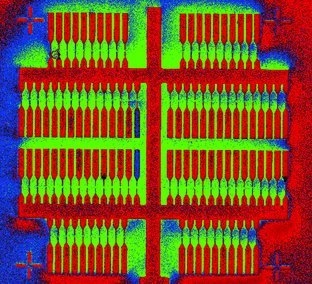
CMOS-compatible assembly of nanotube devices
High-density arrays of semiconducting carbon nanotube devices are fabricated in a CMOS-compatible process.
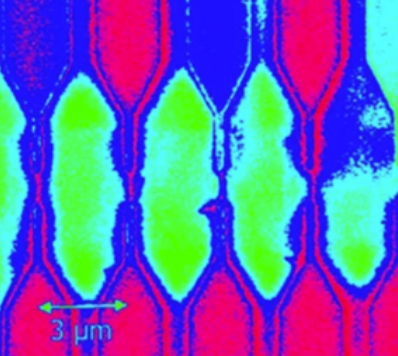
Voltage-Contrast imaging of carbon nanotubes
The electronic structure of carbon nanotubes is revealed in-situ in a scanning electron microscope using voltage-contrast imaging.
Nano Research 1 (2008) 321-332
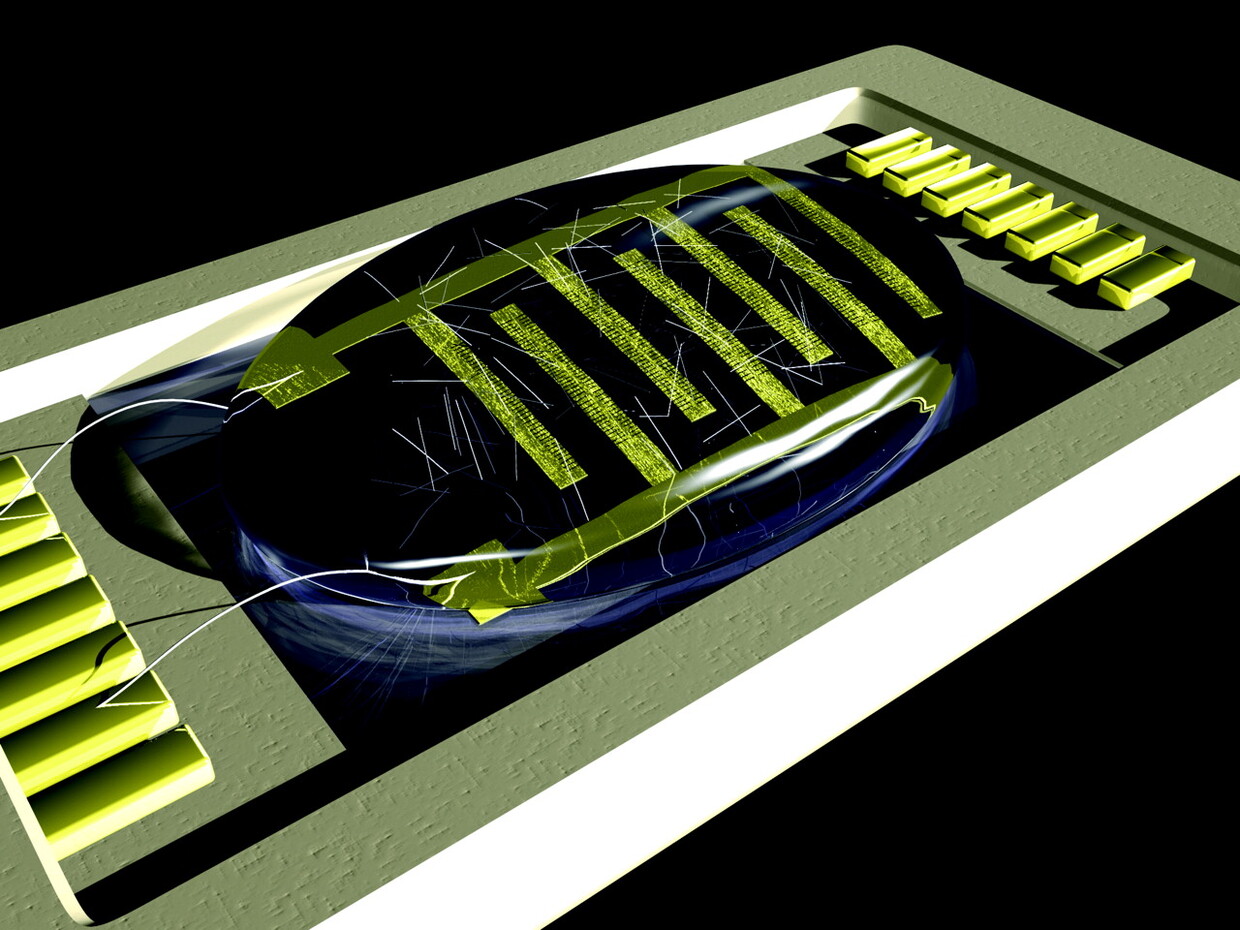
Separation of Metallic from Semiconducting Single-Walled Carbon Nanotubes
Using AC-dielectrophoresis a separation of metallic and semiconducting nanotubes was achieved.
Science 18 (2003) 344-347
